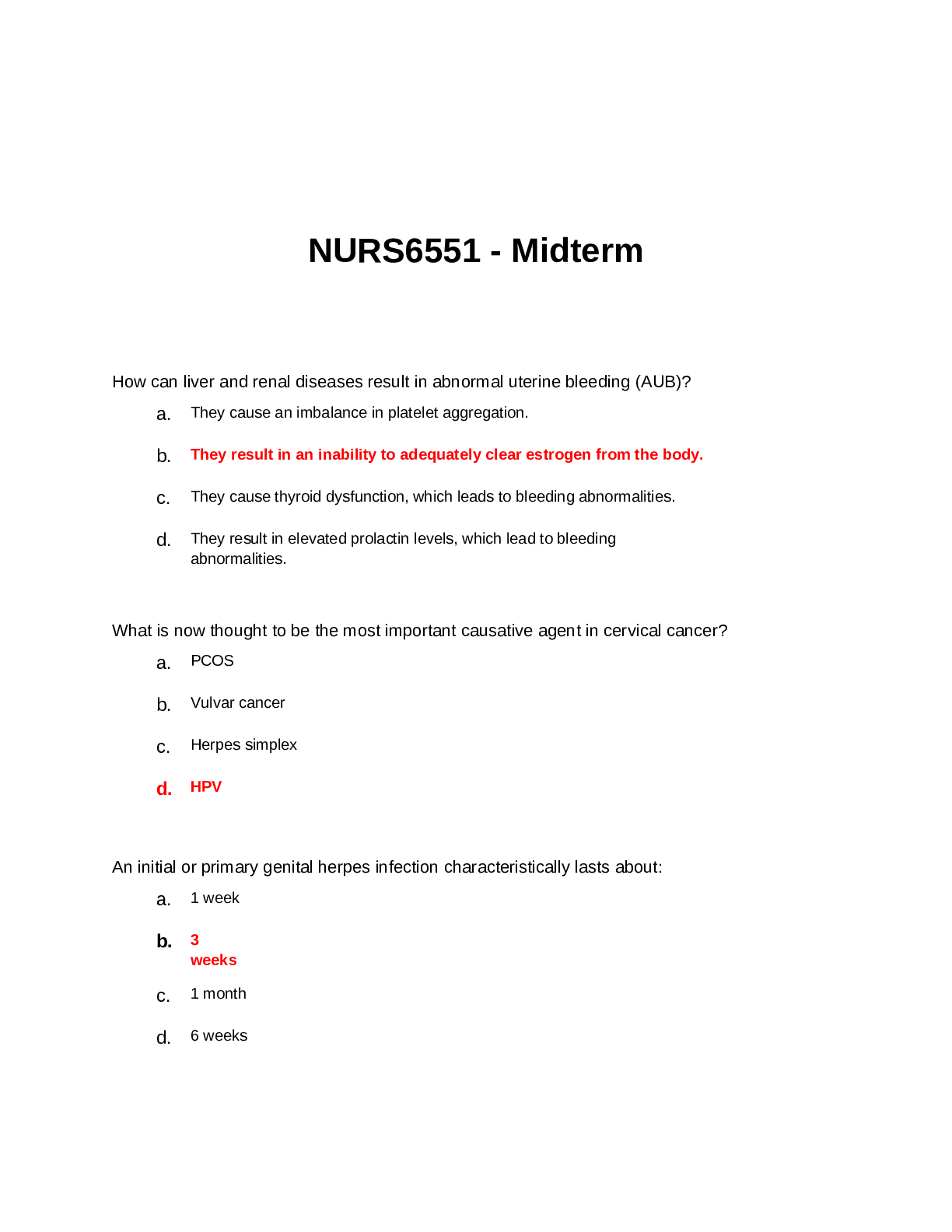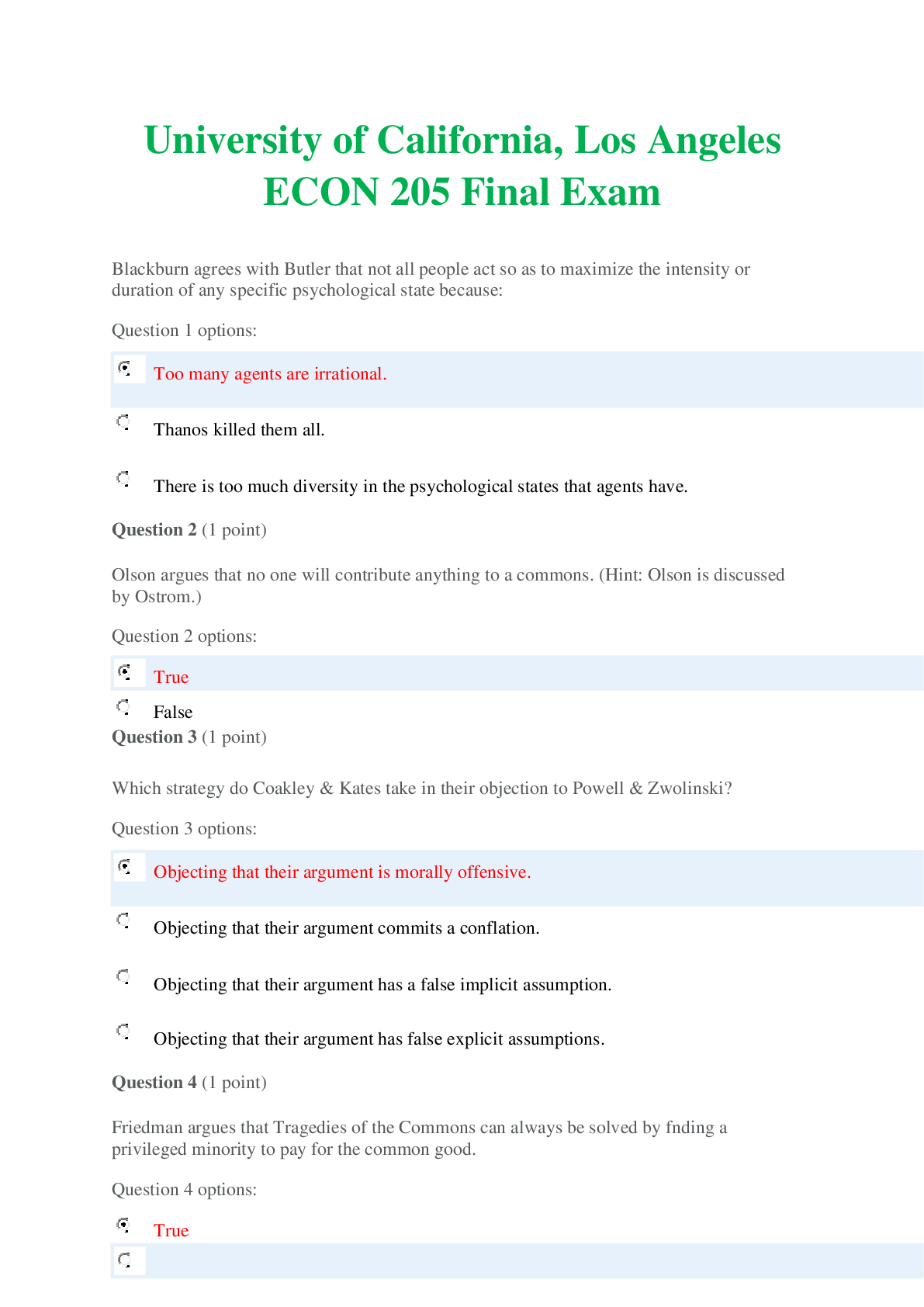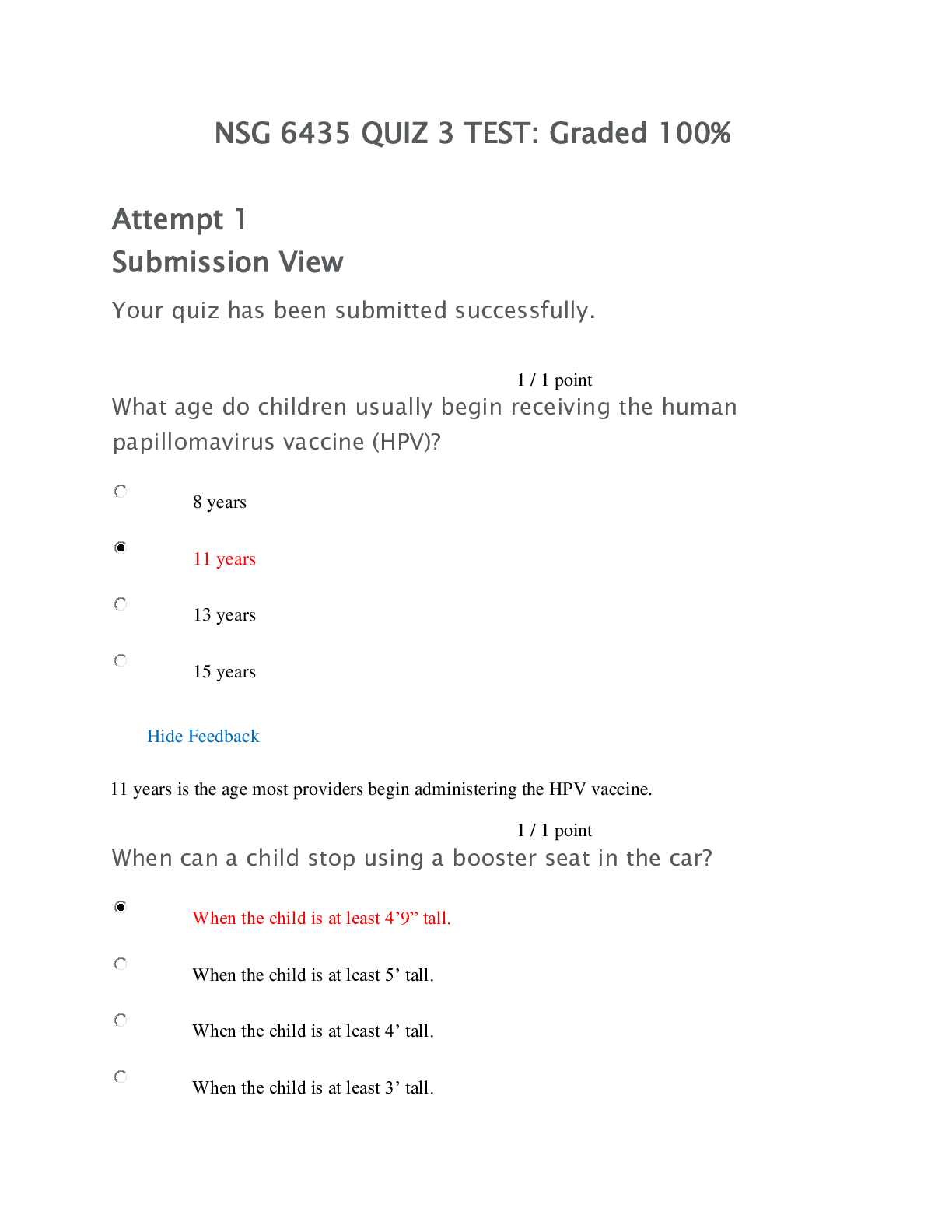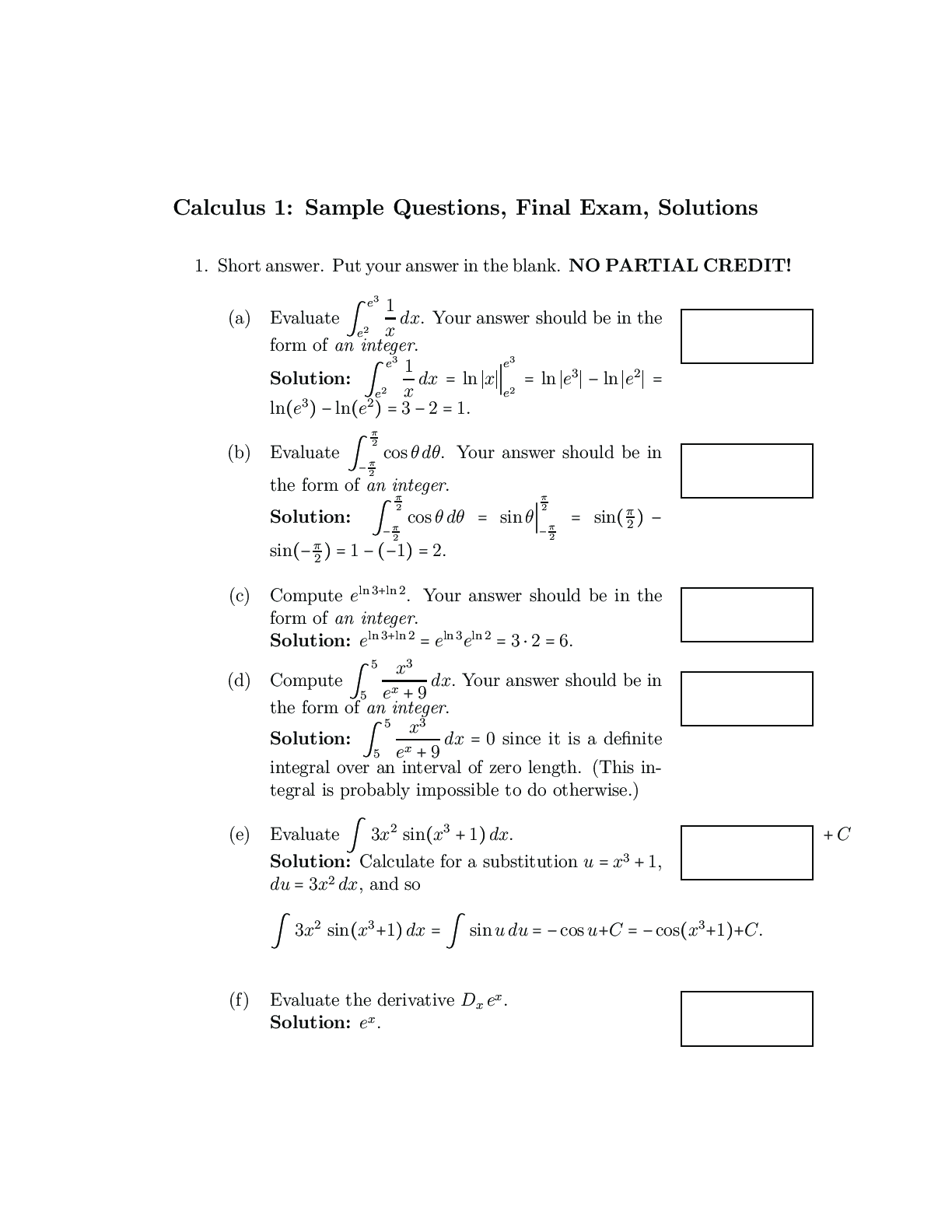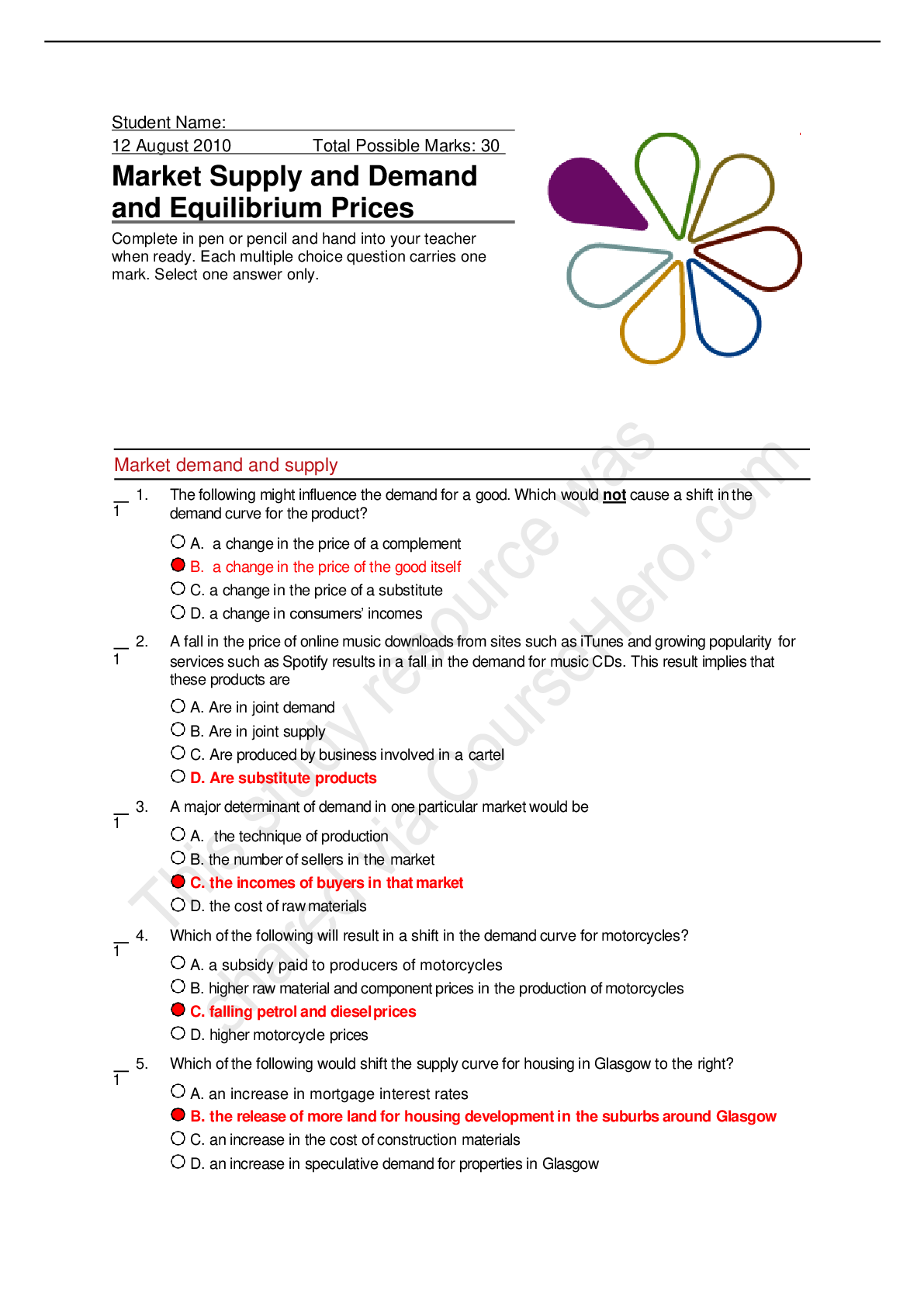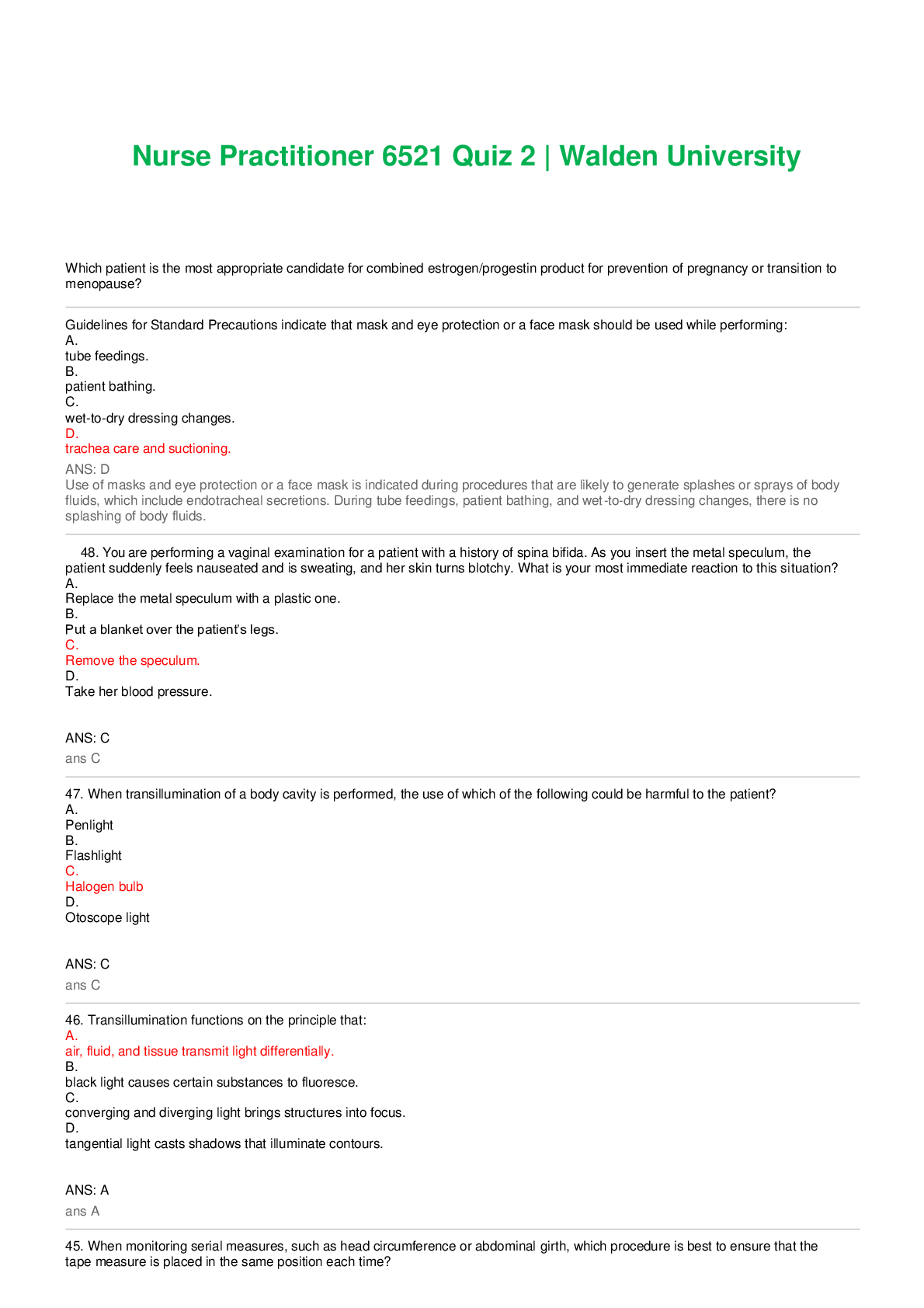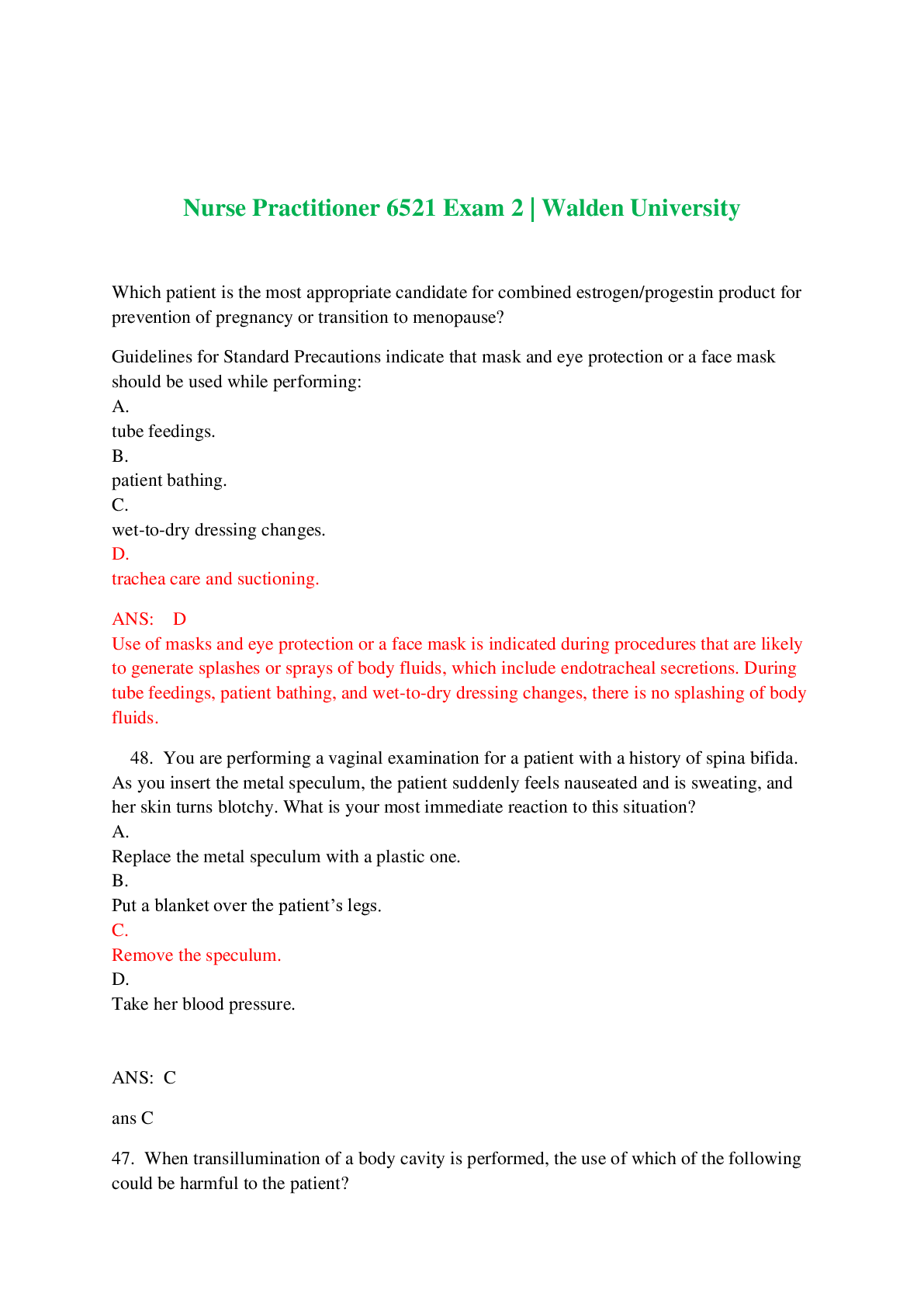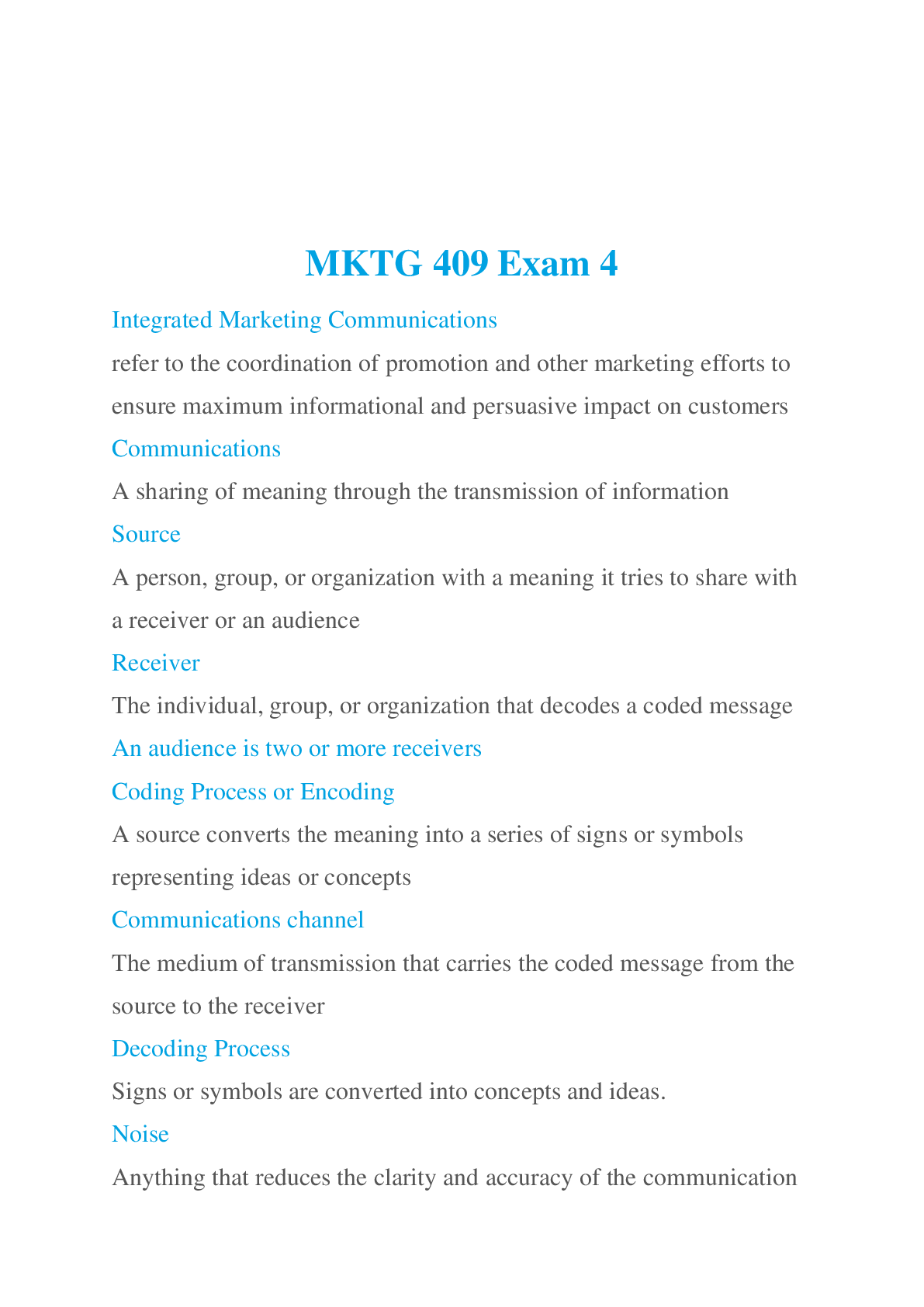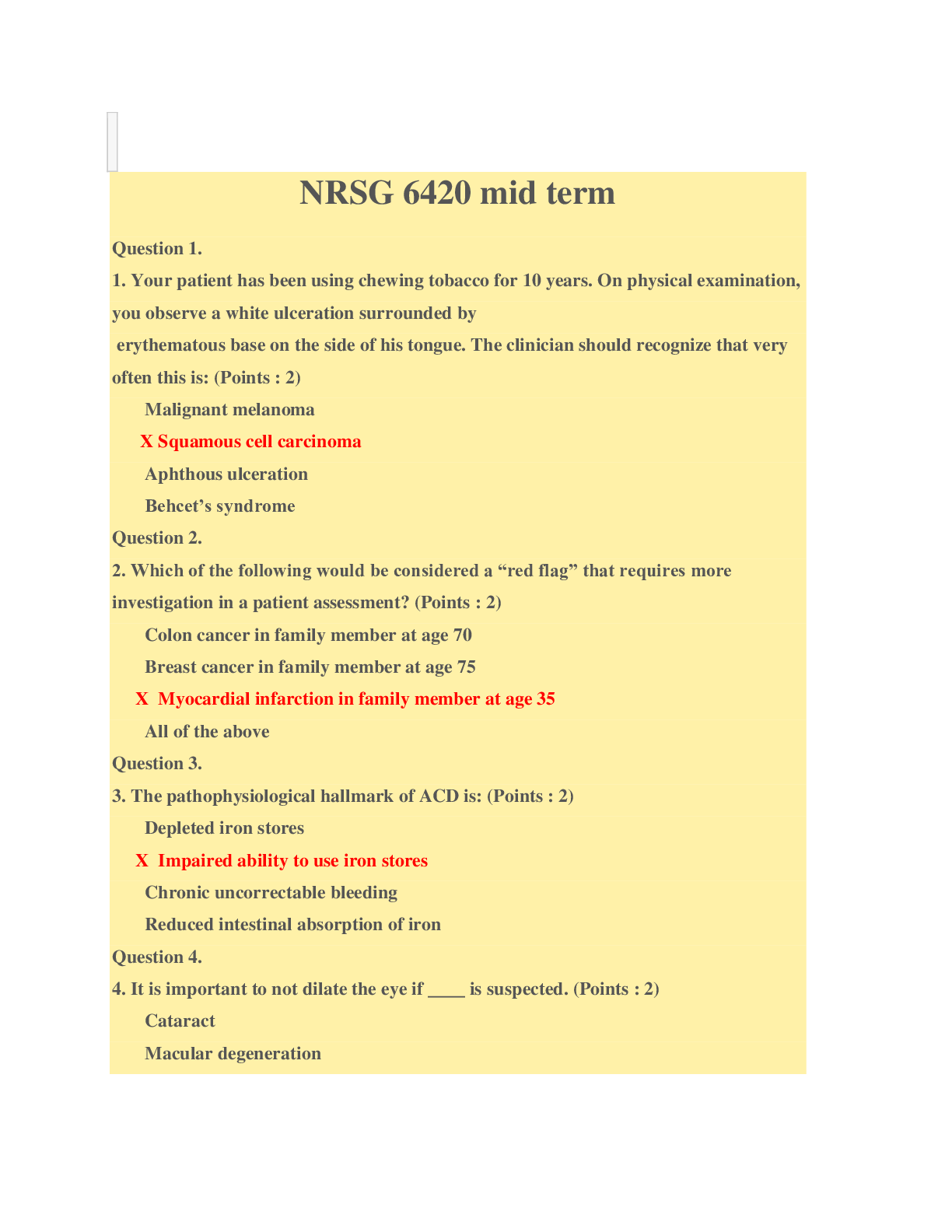Pharmacology > EXAM > ATI PHARMACOLOGY PROCTORED EXAM. (All)
ATI PHARMACOLOGY PROCTORED EXAM.
Document Content and Description Below
ATI PHARMACOLOGY PROCTORED EXAM 1. The nurse is caring for a patient in preadmission testing. The patient has been assigned a physical status classification by the American Society of Anesthesiolo... gists of ASA III. Which assessment will support this classification? a. Normal, healthy patient b. Denial of any major illnesses or conditions c. Poorly controlled hypertension with implanted pacemaker d. Moribund patient not expected to survive without the operation ANS: C An ASA III rating is a patient with a severe systemic disease, such as poorly controlled hypertension with an implanted pacemaker. ASA I is a normal healthy patient with no major illnesses or conditions. ASA II is a patient with mild systemic disease. ASA V is a moribund patient who is not expected to survive without the operation and includes patients with ruptured abdominal/thoracic aneurysm or massive trauma. 2. The patient has presented to the ambulatory surgery center to have a colonoscopy. The patient is scheduled to receive moderate sedation (conscious sedation) during the procedure. How will the nurse interpret this information? a. The procedure results in loss of sensation in an area of the body. b. The procedure requires a depressed level of consciousness. c. The procedure will be performed on an outpatient basis. d. The procedure necessitates the patient to be immobile. ANS: B Moderate sedation (conscious sedation) is used routinely for procedures that do not require complete anesthesia but rather a depressed level of consciousness. Not all patients who are treated on an outpatient basis receive moderate sedation. Regional anesthesia such as local anesthesia provides loss of sensation in an area of the body. General anesthesia is used for patients who need to be immobile and to not remember the surgical procedure. 3. The nurse is caring for a patient in the postanesthesia care unit who has undergone a left total knee arthroplasty. The anesthesia provider has indicated that the patient received a left femoral peripheral nerve block. Which assessment will be an expected finding for this patient? a. Sensation decreased in the left leg b. Patient report of pain in the left foot c. Pulse decreased at the left posterior tibia d. Left toes cool to touch and slightly cyanotic ANS: A Induction of regional anesthesia results in loss of sensation in an area of the body —in this case, the left leg. The peripheral nerve block influences the portions of sensory pathways that are anesthetized in the targeted area of the body. Decreased pulse, toes cool to touch, and cyanosis are indications of decreased blood flow and are not expected findings. Reports of pain in the left foot may indicate that the block is not working or is subsiding and is not an expected finding in the immediate postoperative period. 4. The nurse is preparing a patient for surgery. Which goal is a priority for assessing the patient before surgery? a. Plan for care after the procedure. b. Establish a patient’s baseline of normal function. c. Educate the patient and family about the procedure. d. Gather appropriate equipment for the patient’s needs. [Show More]
Last updated: 2 years ago
Preview 1 out of 21 pages

Buy this document to get the full access instantly
Instant Download Access after purchase
Buy NowInstant download
We Accept:

Reviews( 0 )
$10.00
Can't find what you want? Try our AI powered Search
Document information
Connected school, study & course
About the document
Uploaded On
Aug 15, 2022
Number of pages
21
Written in
Additional information
This document has been written for:
Uploaded
Aug 15, 2022
Downloads
0
Views
109




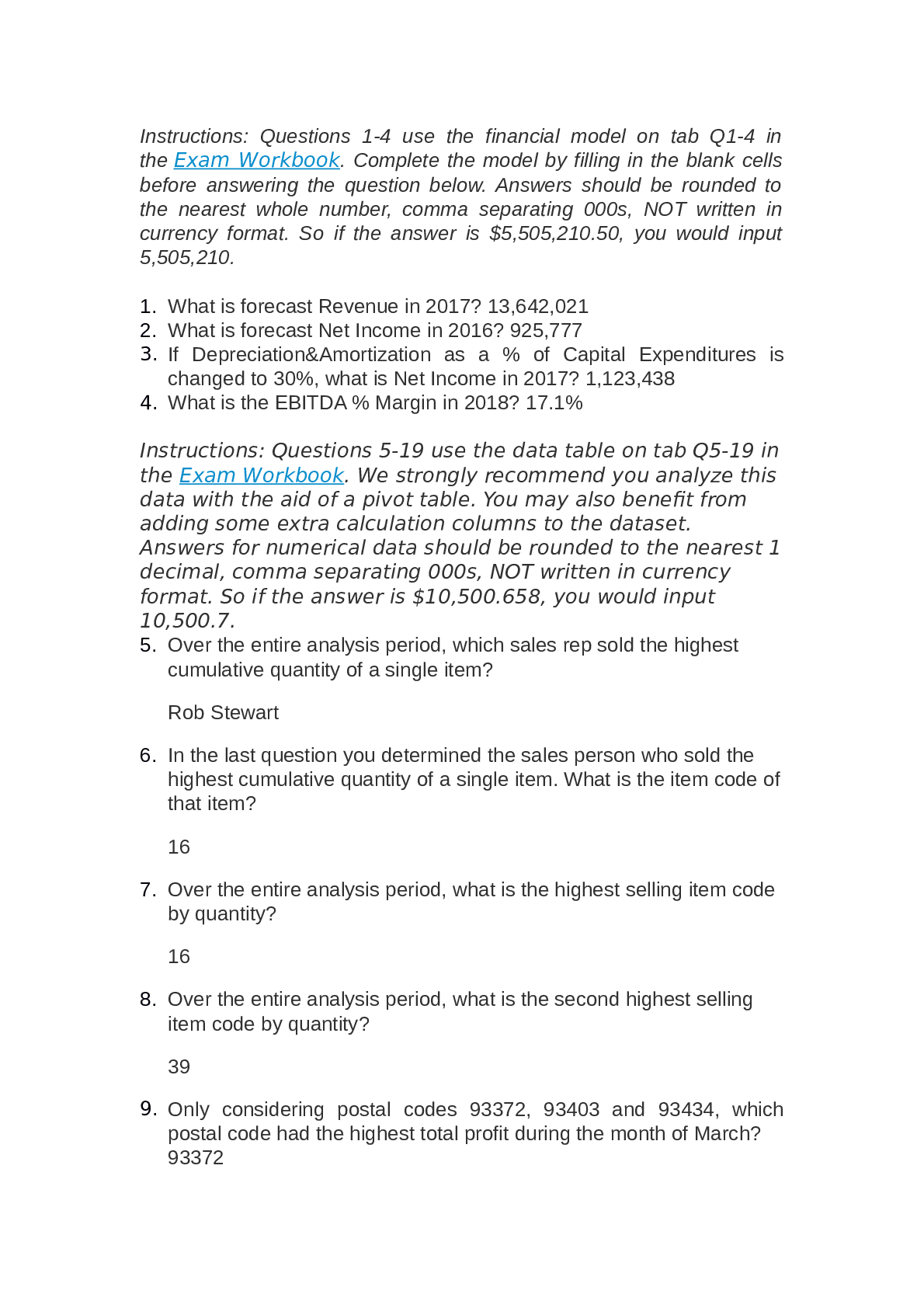


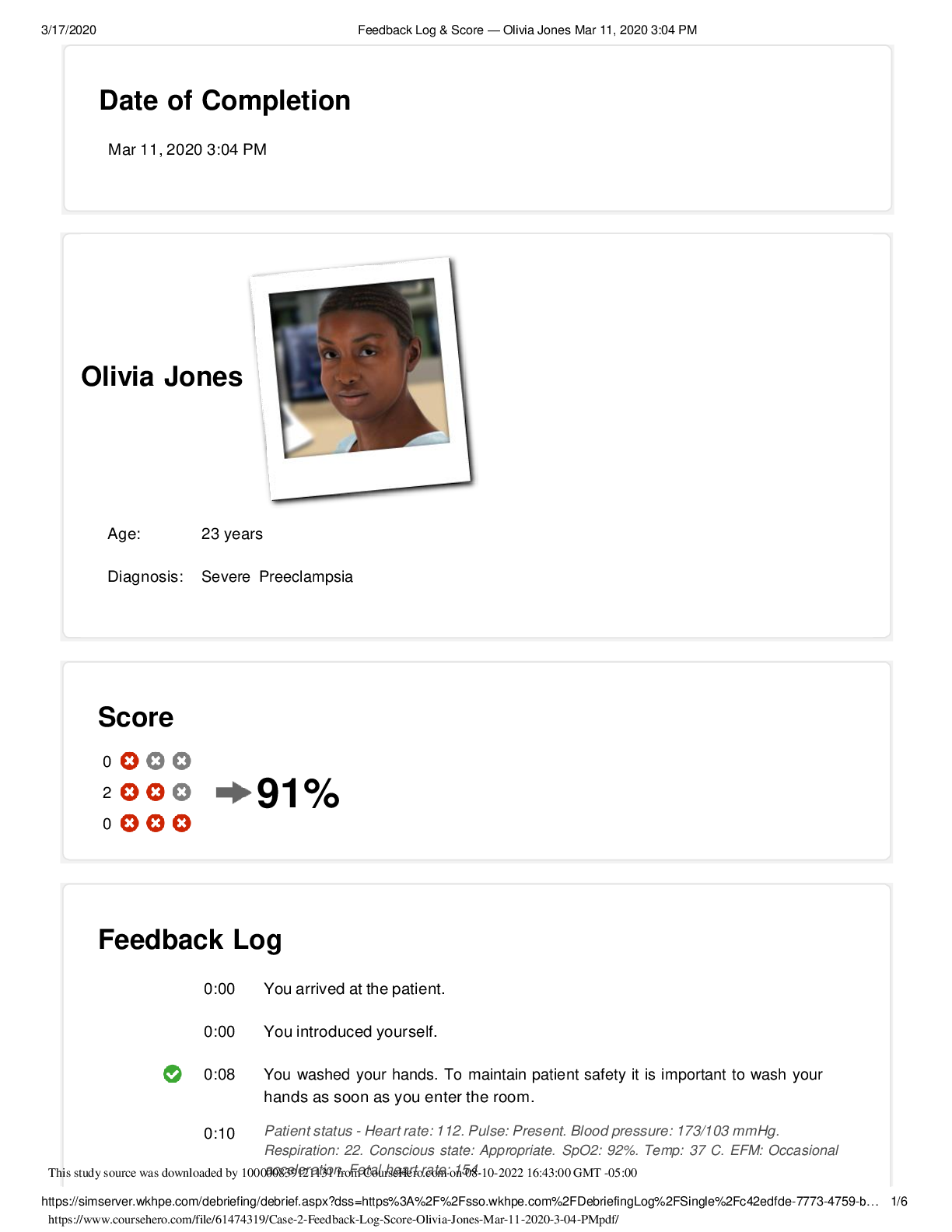
pdf (1).png)
.png)

